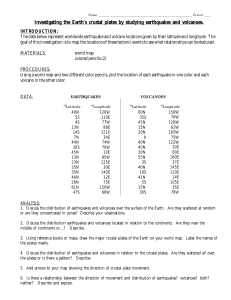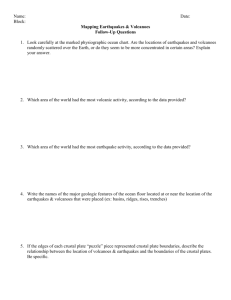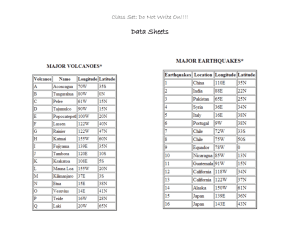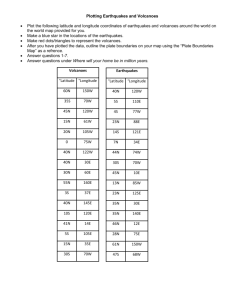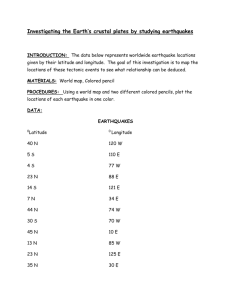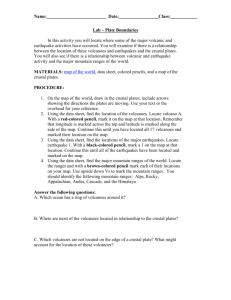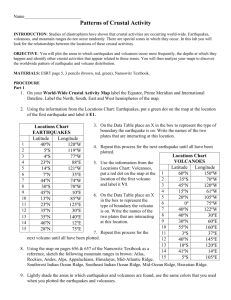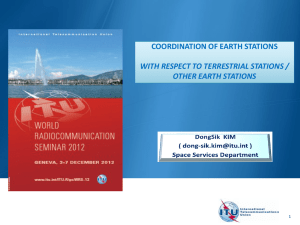Earths Crustal Plates with Earthquakes and Volcanoes 11 12
advertisement
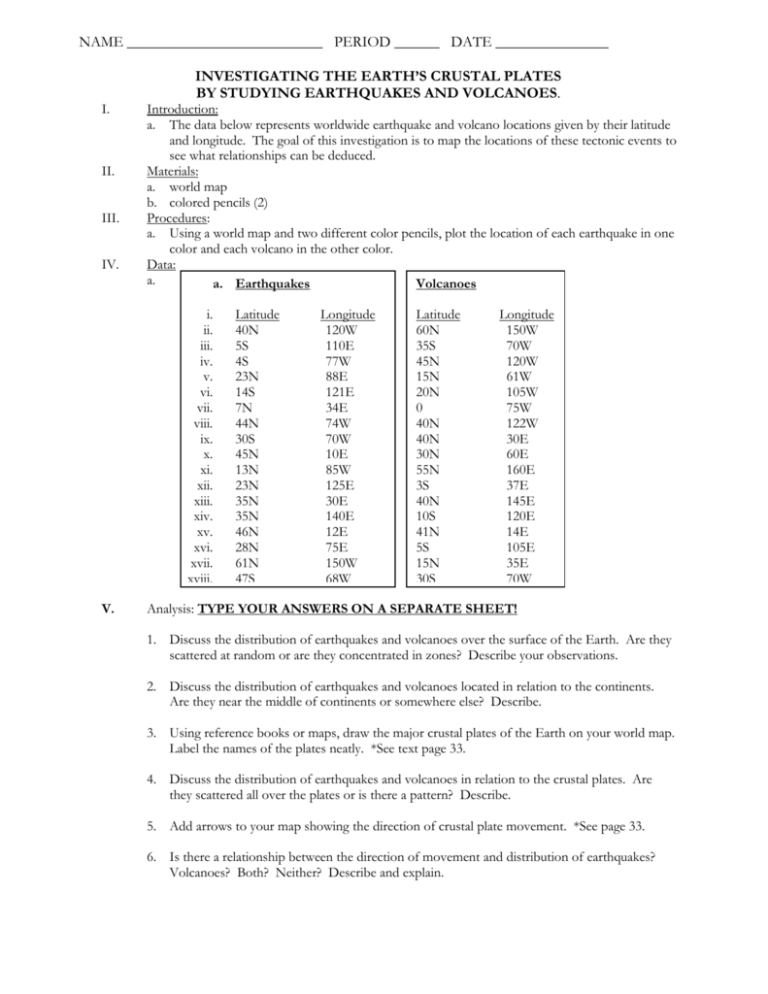
NAME __________________________ PERIOD ______ DATE _______________ I. II. III. IV. INVESTIGATING THE EARTH’S CRUSTAL PLATES BY STUDYING EARTHQUAKES AND VOLCANOES. Introduction: a. The data below represents worldwide earthquake and volcano locations given by their latitude and longitude. The goal of this investigation is to map the locations of these tectonic events to see what relationships can be deduced. Materials: a. world map b. colored pencils (2) Procedures: a. Using a world map and two different color pencils, plot the location of each earthquake in one color and each volcano in the other color. Data: a. a. Earthquakes Volcanoes i. ii. iii. iv. v. vi. vii. viii. ix. x. xi. xii. xiii. xiv. xv. xvi. xvii. xviii. V. Latitude 40N 5S 4S 23N 14S 7N 44N 30S 45N 13N 23N 35N 35N 46N 28N 61N 47S Longitude 120W 110E 77W 88E 121E 34E 74W 70W 10E 85W 125E 30E 140E 12E 75E 150W 68W Latitude 60N 35S 45N 15N 20N 0 40N 40N 30N 55N 3S 40N 10S 41N 5S 15N 30S Longitude 150W 70W 120W 61W 105W 75W 122W 30E 60E 160E 37E 145E 120E 14E 105E 35E 70W Analysis: TYPE YOUR ANSWERS ON A SEPARATE SHEET! 1. Discuss the distribution of earthquakes and volcanoes over the surface of the Earth. Are they scattered at random or are they concentrated in zones? Describe your observations. 2. Discuss the distribution of earthquakes and volcanoes located in relation to the continents. Are they near the middle of continents or somewhere else? Describe. 3. Using reference books or maps, draw the major crustal plates of the Earth on your world map. Label the names of the plates neatly. *See text page 33. 4. Discuss the distribution of earthquakes and volcanoes in relation to the crustal plates. Are they scattered all over the plates or is there a pattern? Describe. 5. Add arrows to your map showing the direction of crustal plate movement. *See page 33. 6. Is there a relationship between the direction of movement and distribution of earthquakes? Volcanoes? Both? Neither? Describe and explain.
